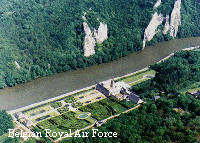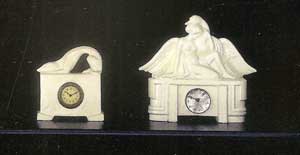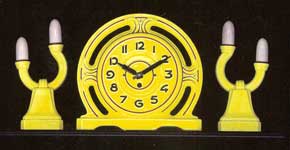| Wallonia | ||
|
With the commemoration of the (beginning of) the Great War coming soon, the little known military cemetery of Tarcienne, 200 m west of the N5 south of Charleroi is surely worth a visit. On this cemetery for victims of the Battle of Charleroi you'll find typically French white concrete memorials as typically German granit crosses. Principally each French victim received an individual tomb, while on each German cross two or three names are engraved. In general these German stones symbolise the presence of the remnants of the mentioned victims on this cemetery but not an individual place. |
||
|
|
||
The
central ossuary suggests that victims from both French and German
nationalities share a same space Surprising is also the alternation of white concrete crosses in remembrance of the apparently dominant catholic French soldiers (even after the French Revolution) and the white concrete monuments, exactly as high as the crosses, in the form of a mosque-dome in remenbrance of Islamic war-victims. At a first vue the white concrete French crosses are only boring, but after a while some questions are rising. |
||
Aside
the more than four hundred French soldiers, also two Russians died on
this place. Does it surprise you that Kuponin, the only known Russian,
died for the fatherland (“mort
pour la patrie”) and not for France? Or for Russia? And that the unknown Russian soldier seems to have died for nothing or nobody?  On nearly all the French tombs is marked “mort pour la France”, what means: died for France. |
Even before enterring this cemetery you will see the bilingual stone as a socle of an altar, not in Dutch and French but in French and German. Note that in French soldiers died, in German they died a heroic death ("Heldentod").
|
Why
or for who died the unknown French soldier (“soldat français inconnu”)? On his cross isn't mentioned he died
for France (“mort
pour la France”) or for his fatherland ( “mort
pour la patrie”) One tomb mentions only a unknown somebody (“inconnu”), even not he (or she) was a soldier, but sure this person died for France. Somebody on the wrong place at the wrong moment?  |
| In Charleroi the Photography Museum has composed a beautiful collection of daguerrotypes to nowadays photographs. Regularly they have temporary exhibitions but therefore it is easier to go and consult their site. |  |
|
| Also in Charleroi there is the Industry Museum, accommodated on the coal-mine site of Le Bois du Cazier. |  |
|
| You can make Cycling Tours in Charleroi with Pro Velo. They have bicycles for rent and possibly can guide you in English through this industrial boomtown with coal-mines and immense steel-factories in between living areas with some splendid houses. |  |
|
| West of Charleroi the Canal du Centre connects the bassin of the river Schelde with that of Samber and Maas. Along this threehundred ton canal lots of trees have been planted so it is great cycling from the still functionnal hydraulic ship elevators from the time of king Leopold II over the beautiful bridges in eclectic style. The more you can find two canal tunnels on the track of the old canals connecting Charleroi and Brussels. |  |
|
| South of Dinant there are the Castle and Gardens of Freÿr : a little "Versailles" in renaissance style with gardens in classical French style with a six kilometers long maze and an orangery with orangetrees of more or less threehundred years. |  |
|
| Between Namen and Dinant the old parts of the eightteenth century Gardens of Annevoie go on to be a wonderfull place for garden lovers: numerous water parts with fountains and waterfalls without any pumping installation, bedded in a multitude of hays, but without the loud colors of the more recent flower carpets. |  |
|
| In Namen you shouldn't miss the Félicien Rops museum: a beautiful collection of lithographies, etchings, aquarells, drawings and paintings of the (in Paris) best paid illustrator from the late-nineteenth century. Besides his impressionist landscapes Rops specially acquired notoriety with his drawings and paintings of the surrounding world with often great erotic inspired scenes. In this museum is also a library specialised in nineteenth century engravings, and a museumshop. |  |
|
| The Clockarium in Brussels houses a great collection of porcelain sets of mantelpiece ornaments from the beginning of the twentieth century. These porcelain ornaments are forming the cheaper version of the marble ones that are exhibited at La Calestienne. |  |
|





